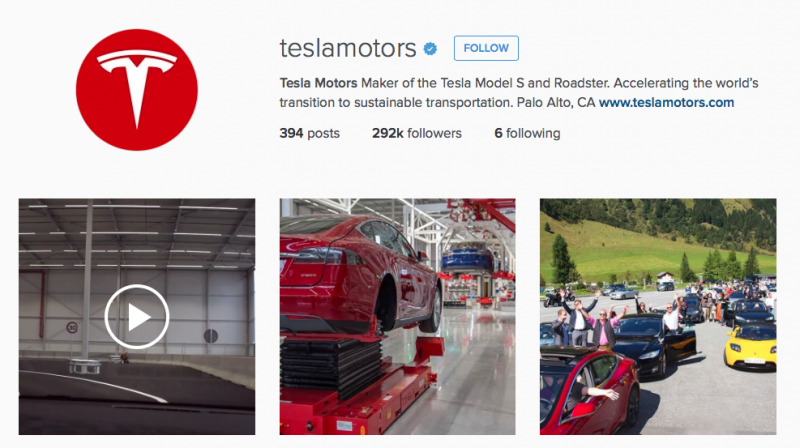With the mountain of social media networks out there it’s hard which networks your brand should be active on and which ones are just a waste of valuable resources. Today we’re going to drill into Instagram – who should have an account, some different ways you can use the platform, and ultimately if it’s worth the time and money.
Who’s on Instagram?
The easiest way to look at who should have an Instagram account is to look in detail at who’s currently using Instagram (we’re jumping straight in and skipping the history of Instagram (the Histagram, if you will) but if you’re interested all your key info’s right here in this
handy infographic).
There’s plenty of data and projection out there and they all say about the same thing. Here are the highlights:
- Instagram is heavily weighted towards younger users. 53% of 18-29 year olds who are online use Instagram.
- Instagram continues to grow quickly, and now 26% of adult internet users have it. Growth is quite heavily focused in the younger demographics.
- Most Instagram users are either in university or have graduated university (55%).
- Brand engagement is higher on Instagram than on any other platform.
There are lots of articles about Instagram stats and demographics out there but they all come back to these four points. Instagram is growing, Instagram users are young, Instagram has far higher engagement with brands, and Instagram users are generally educated and making an above average income (or they will be one day).
Now, most brands will see the high engagement rates (4.21% vs 0.1% according to
SproutSocial) and jump on Instagram for that alone. But like a lot of measures of engagement that statistic needs to be taken with a grain of salt. Engagement on Instagram is usually going to be ‘hearting' a photo. That’s it.
It’s a very low level of engagement compared to retweeting something and adding your own content, or repinning an image on Pinterest and adding a fresh caption.
So while the engagement ranks very high for brands, it’s perhaps a little misleading to say that it’s actually better than other social networks.
So, who should be on Instagram?
For starters, if your demographic aligns nicely with the demographic of Instagram, we’d recommend you get your brand an account. It’s a powerful tool to reach out to your audience. Plus, it can be a fantastic place to showcase your product.
For example, a company with a young demographic and a visual product like Forever21 should definitely be on Instagram (in fact they are
@forever21).

However, something that caters to an older crowd and isn’t very visual, for example a law firm specializing in drafting wills, should probably not invest the time.
Other brands that should think about Instagram and those that produce things that are going to be desired
eventually. For example, car companies have embraced Instagram like almost no other industry. Not because young adults are a key market, but because they want to imprint their brand early to reap recognition later on.

The same goes for luxury brands like Michael Kors. They’re using Instagram not to push products now but to build brand recognition in who they know will be buying their products later in life. Instagram is just another avenue for brand building.

Of course, there are a lot of arguments that all brands should embrace Instagram. For starters, branded Instagram accounts tend to be much better received than a branded Facebook post.
For example, National Geographic runs an Instagram account called
@Natgeo. While they do promote their own products, it’s hard not to like the truly stunning nature photography they also post.
Another reason why all brands might want to think about is the very core of Instagram – pictures. Pictures (and video) are shown again and again to be the most effective way to reach your audience. Whether you’re a teen clothing store or a luxury hotel, pictures are the best way to tell your story. So why shy away from a platform entirely designed for images?
[contextly_sidebar id="bXkq7wXDFEOilaqFGNQN6z8LihLGKKvX"]
Ways to engage: private accounts vs sponsored content
Another factor to consider is not only
if you want to use Instagram, but
how.
In 2013, Instgram monetized and allowed brands to have sponsored ads – basically posts that could be made to appear in people’s Instagram’s feeds. Like most ad platforms, there’s a large and intricate backend allowing you to track and place your ads for maximum impact. And with hashtags, you can get very precise in who you target. For example, if you were in cafe in Toronto, you could use #cafe #toronto #coffee to target people who like cafes, coffee, and are presumably in Toronto. Simple.
There are also a host of other tools that sponsoring posts gets you to improve your ads, like special formats and carousel ads.
However, you do pay a premium for a good spot in your audience’s news feeds.
The other option is to just build an Instagram naturally through a profile. Your traffic will likely be better since it’s all organic versus promoted, but it’s a slow process to gain traction, and can be enormously time consuming to both build and maintain. However, it can pay solid dividends, especially if your marketing budget is tight.
Conclusion
So who should be on Instagram? As usual, it depends. Here’s who we think can gain the most:
- Brands that have young demographics (18-24 or teens)
- Aspirational and luxury brands, working towards brand recognition later on (e.g. cars and luxury items)
- Brands who have highly visual products or services, like National Geographic
Those are the people who should definitely be putting both time and resources into managing a great Instagram campaign. However, even if you don’t quite fit, the benefits of Instagram as a platform mean that almost everyone can find their niche. And with continued growth that shows no signs of slowing, it might be worthwhile getting started right now.
Happy ‘gramming!
